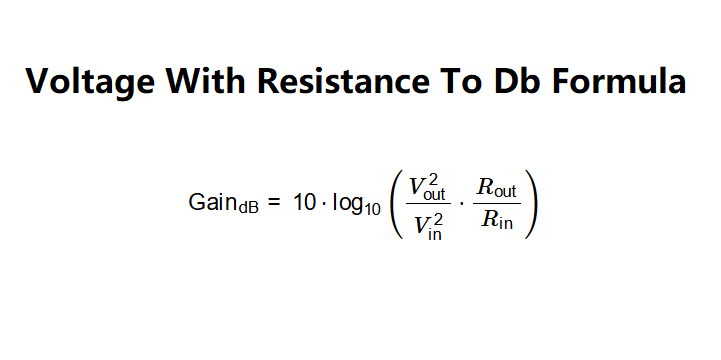 Home
Home
 Back
Back

Definition: This calculator computes the decibel gain (Gain_dB) based on the ratio of output voltage to input voltage, adjusted by the input and output resistances.
Purpose: It is used in audio engineering, telecommunications, and electronics to measure the amplification or attenuation of a signal in systems where voltage and impedance play a role.
Decibel gain is calculated using:
Voltage conversions:
Explanation: Input and output voltages are converted to volts, resistances to ohms. The squared voltage ratio \(V_{\text{out}}^2 / V_{\text{in}}^2\) is multiplied by the resistance ratio \(R_{\text{out}} / R_{\text{in}}\), and the result is scaled using the logarithmic formula to get the gain in decibels.
Details: Decibel gain considering voltage and resistance is crucial for understanding signal amplification in amplifiers and audio systems, especially when impedances differ, ensuring accurate system design and performance.
Tips: Enter the output voltage (V_out), input voltage (V_in) in V, mV, or kV, and the input resistance (R_in) and output resistance (R_out) in Ω, kΩ, or MΩ (V_in and R_in must be greater than 0). The result will be the decibel gain (Gain_dB).
Q: What does a negative dB value mean?
A: A negative dB value indicates attenuation, meaning the output power is less than the input power. For example, a Gain_dB of -3 dB means the output power is approximately half of the input power.
Q: Why are V_in and R_in not allowed to be zero?
A: The formula involves dividing by V_in² and R_in, and division by zero is undefined in mathematics. A zero value would make the logarithmic calculation invalid.
Q: Can I use this calculator for power instead of voltage?
A: No, this calculator is designed for voltage and resistance ratios. For power, the formula changes to \( \text{Gain}_{\text{dB}} = 10 \cdot \log_{10}\left(\frac{P_{\text{out}}}{P_{\text{in}}}\right) \), which requires a different calculator.
Q: What is the significance of the factor 10 in the formula?
A: The factor 10 is used because decibels are defined as ten times the logarithm (base 10) of a power ratio. This scaling makes the decibel unit practical for measuring a wide range of differences.
Q: How do I interpret a Gain_dB of 3 dB?
A: A Gain_dB of 3 dB means the output power is approximately double the input power. Conversely, -3 dB means the output power is approximately half the input power.